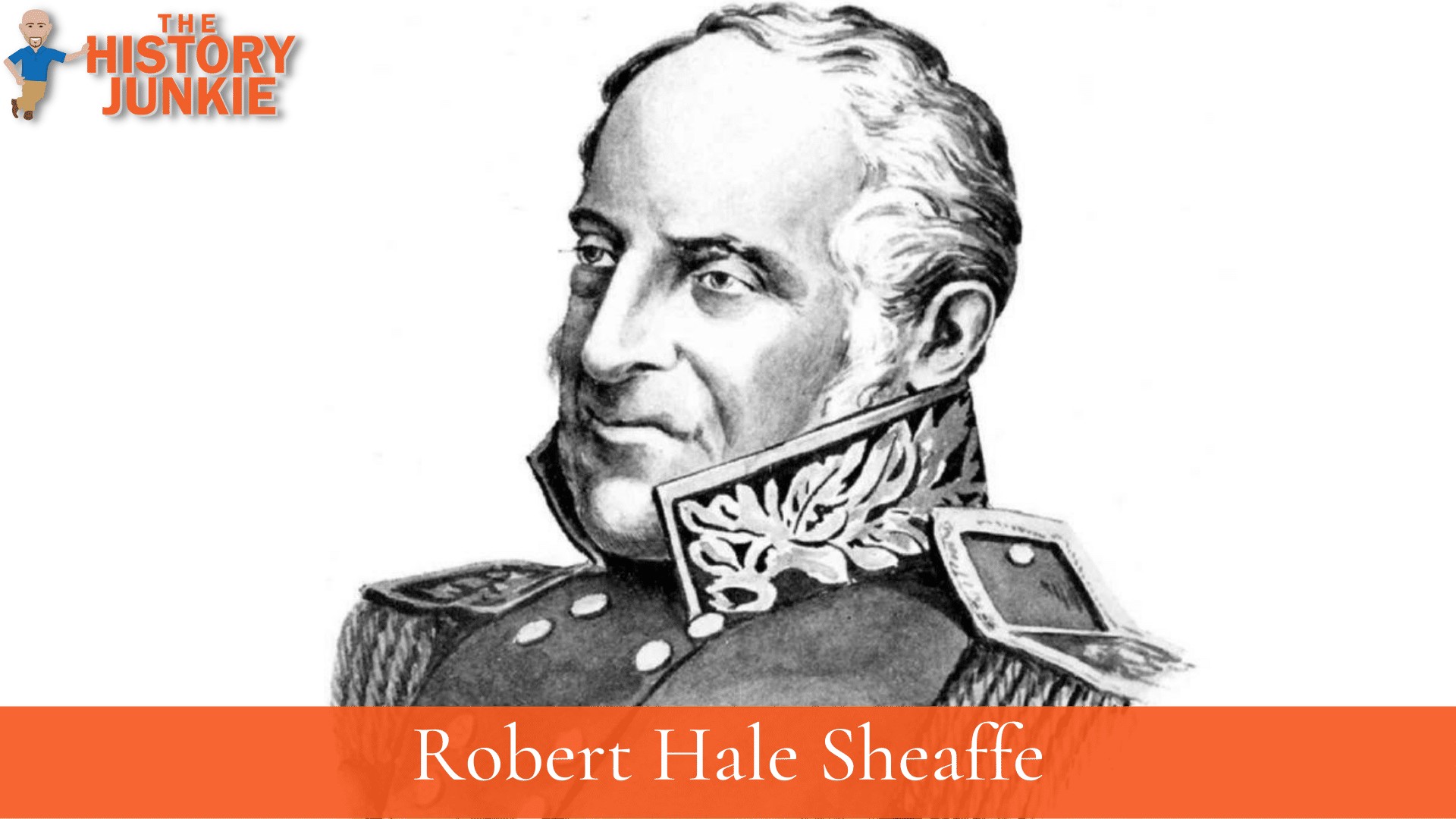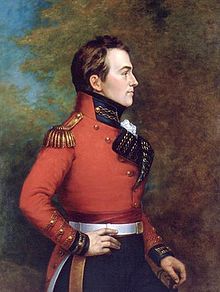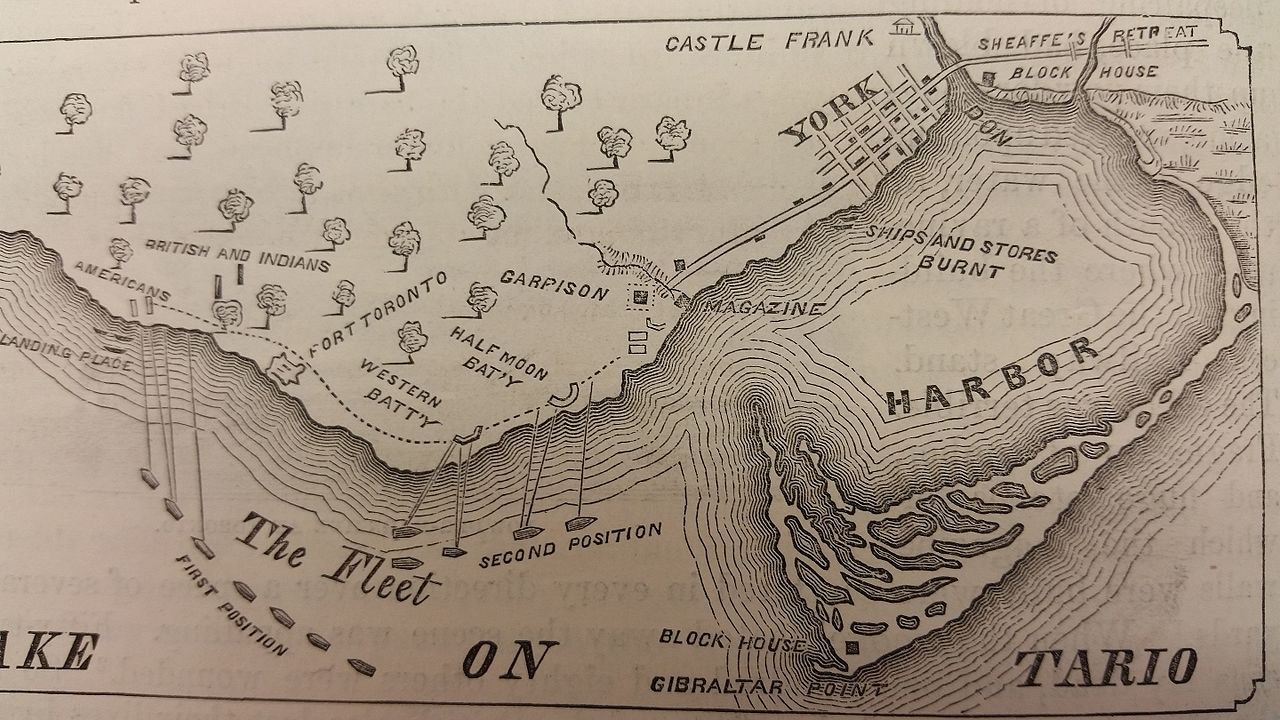General Sir Roger Hale Sheaffe, 1st Baronet (15 July 1763 – 17 July 1851) was a Loyalist General in the British Army during the War of 1812.

He created a Baronet in 1813 and afterward served as Commander and acting Lieutenant Governor of Upper Canada.
Early Life
Roger Hale Sheaffe was born in Boston, Massachusetts Bay, the third son and eighth child of William Sheaffe, Deputy Collector of Customs, and his wife Susannah.
William died in 1771, leaving at least ten children still living. Lord Percy, later 2nd Duke of Northumberland, aided the family during the American Revolution and sent young Roger to a military academy in London.
He helped support young Roger's military career with the purchase of his first commission as ensign in 1778 in the 5th Regiment of Foot. He later purchased a Lieutenancy.
Sheaffe served with his regiment in Ireland from 1781 until 1787, when it was posted to Canada. In Detroit and at Fort Niagara, he served under Lieutenant-Governor John Graves Simcoe (a British officer when the Culper spy Ring was operating in New York during the Revolutionary War), who had a high opinion of him.
He was commissioned Captain in 1795. He first served under Lieutenant-Colonel Isaac Brock in the 49th Regiment of Foot in 1798; they served together in the campaign against the Batavian Republic in 1799 and in the Baltic in 1801.
The 49th was posted to Canada in 1802. As Lieutenant-Colonel, Sheaffe commanded the garrison at Fort George, where he faced an attempted mutiny.
Despite his own notable achievements, Sheaffe was often compared unfavorably with the popular and charismatic Brock.
Sheaffe had been Brock's second in command prior to their time in Canada and continued in that role upon their arrival.
Shortly after arriving at their new station, a mutiny was attempted by some of Sheaffe's men. Brock hurriedly came to the aid of his subordinate, ended the mutiny without conflict, and arrested the perpetrators.
They claimed they took their actions directly as a result of Sheaffe's belligerence but were subsequently executed after a court-martial. Brock warned Sheaffe to stop working the men too hard and to stop punishing men harshly for small infractions.
Sheaffe nevertheless attained the rank of Colonel in 1808 and Major-General in 1811. This last promotion actually hurt Sheaffe financially, as he transferred from a full-pay commission as Colonel of the 49th to half-pay as an unassigned general officer on the staff.
War of 1812
Sheaffe returned to Canada from a visit to England in July 1812. The next month, the War of 1812 broke out. Sir George Prevost, the Governor-General of Canada and commander in chief of the forces there appointed Sheaffe to command the troops at Fort George on the Niagara River.
While Brock was absent, dealing with an American army at the Siege of Detroit, Sheaffe was required by Prevost to negotiate an armistice with the American forces on the opposite side of the river.
Prevost may have believed that peace could be negotiated quickly, but by the time the armistice ended, the Americans had been substantially reinforced.
Early on October 13, the Americans began crossing the Niagara at Queenston, a few miles south of Fort George. Brock galloped from Fort George to Queenston, arriving just in time to see the Americans capture the commanding heights and a British heavy gun battery.

He sent orders to Sheaffe to bring reinforcements, but before they could arrive, he led two frontal assaults against the heights. During the second, he was shot dead.
Sheaffe arrived on the battlefield at 2 p.m. In contrast to Brock's actions, he waited for reinforcements before leading his force on a wide detour to the top of the heights so as to shield them from American artillery.
He then meticulously drew up his force before attacking at 4 p.m. The Americans, terrified of the Mohawks who had also joined the battle, tried to flee but were trapped against the river and surrendered. 1,000 prisoners were taken, for a cost of 50 casualties.
Sheaffe was appointed Lieutenant Governor and commander in Upper Canada in succession to Brock but was unpopular with the people he was to defend and often with his own soldiers.
During the later months of 1812, he was unable to transact business with the Legislature due to illness and other military commitments, forcing Prevost to make a personal visit to Upper Canada in February 1813.
In April, Sheaffe was present in York, the provincial capital, to deal with the civil authorities. York was weakly defended, and Sheaffe had only four companies of regulars, passing through on route to Fort George and other posts.

On April 27, an American force supported by gunboats and other armed vessels attacked. In the Battle of York, Sheaffe's outnumbered troops were driven back to the edge of the town.
Sheaffe decided to preserve his regulars and ordered a retreat to Kingston, having destroyed the fort and a sloop of war under construction in the dockyard.
The militia was left to be taken prisoner while the town was looted by the Americans, and several buildings were set on fire.
Many prominent citizens of Upper Canada denounced Sheaffe's conduct at York, and Sir George Prevost relieved Sheaffe of his military and civil appointments in Upper Canada, putting him in charge of the troops in Montreal.
Post War Career
Later in the year, Sheaffe was recalled to Britain. Here, he subsequently had a successful military career, being promoted to Lieutenant-General in 1821 and full General in 1835.
He and his family lived in Penzance and Worcester, and he retired to Edinburgh. He died at his home at 36 Melville Street on 17 July 1851 and is buried in New Calton Cemetery beside his daughters, Frances Julia and Agnes Emily.
He had been awarded a Baronetcy in January 1813 as a reward for the victory at Queenston Heights, but as none of his children survived him, the title died with him.
